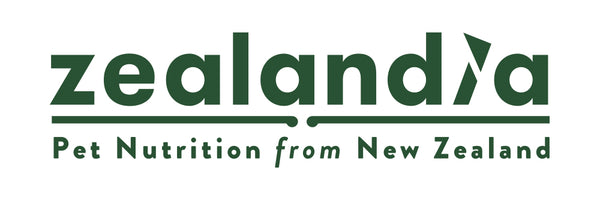What food is best for dogs and cats with diabetes?

Written by Dr Sarah-Jane Molier BVM&S MRCVS BSc (United Kingdom)
Diabetes is a relatively common condition in dogs and cats. If your dog or cat has recently been diagnosed with diabetes, you may (understandably) be feeling overwhelmed. You will have a lot of information to digest, at the same time as learning how to administer injections to your pet. Luckily, diabetes can usually be well controlled with a combination of medication, diet and weight control. So, let’s explore the important role diet plays in managing this complex condition.
What is diabetes?
In healthy dogs and cats, sugars are absorbed from the food and travel around the body in the blood, where they are known as ‘blood sugars’. These sugars are used by all of the cells in the body for energy. Insulin is a hormone produced by the pancreas (a small organ near the stomach). Insulin is needed for the blood sugar to be able to move from the blood stream into the cells.
In cats with diabetes, the pancreas cannot produce enough insulin, and the tissues in the body have reduced ability to respond to any insulin that is produced (known as ‘insulin resistance’). This is similar to type II diabetes in humans. Less commonly, diabetes in cats can be secondary to some other conditions.
In dogs with diabetes, the body attacks its own insulin-producing cells (an auto-immune condition). This means that dogs with diabetes can’t produce enough insulin. This is similar to type I diabetes in humans. Diabetes in dogs can also be caused by pancreatitis (inflammation of the pancreas).
The result in dogs and cats is that blood glucose (sugar) builds up in the blood stream, reaching dangerously high levels. Meanwhile, the cells are starved of energy, since the glucose cannot enter the cells to provide energy.
What are the symptoms of diabetes in dogs and cats?
The symptoms of diabetes in dogs and cats are caused by the high blood sugars, and the inability of the body to use these blood sugars for energy. The most common symptoms seen are:
- Increased thirst
- Increased need to urinate (wee)
- Weight loss
- Increased appetite
Other possible symptoms include a poor coat, weakness and urine infections.
If left untreated, dogs and cats can develop diabetic ketoacidosis (DKA). This causes sickness, diarrhoea, poor appetite, lethargy, ataxia (a wobbly gait) and even collapse. This is a very serious condition and needs immediate veterinary attention.
How is diabetes diagnosed?
If your vet suspects diabetes, they can make a diagnosis from a combination of blood and urine tests. Sometimes other tests are also needed, to rule out other conditions. In very stressed cats, the test may need to be repeated, to be sure of the diagnosis. This is because stress itself can cause high blood sugar in cats.
How is diabetes treated in dogs and cats?
Treatment for diabetes involves a combination of medications, managing any predisposing factors, and diet. Managing predisposing factors could involve changing any medications which can increase the risk of diabetes (such as steroids), or achieving weight loss (since obesity increases the risk of diabetes too). However, it’s important not to make any changes unless your vet advises you to.
Medication for diabetes involves giving your dog or cat insulin injections once or twice a day. Although this may sound daunting, most pets learn to tolerate it very well, with practice and plenty of treats! The needle is very small, so the injection isn’t painful. Your vet or vet nurse will teach you how to inject, and will let you practice until you are confident injecting at home. Often pets need to be hospitalised initially, while treatment is started. This is to allow your vet to monitor your pet, and to ensure that their blood sugars don’t drop too low with treatment.
Treatment will usually be needed for life, although some cats do go into remission. This will mean regular vet trips, blood glucose checks and urine samples.
What should I feed my cat with diabetes?
If your cat is obese, it’s really important that they lose weight. Obesity interferes with the action of insulin, meaning it doesn’t work as well. This means that achieving a healthy body weight can reduce the dose of insulin needed. In cats, it may even resolve diabetes, in some cases. You can encourage weight loss by a combination of reducing calorie intake and increasing exercise. Feeding only wet food (as opposed to kibble) may help with weight loss, since eating only wet food usually means a lower calorie intake compared with kibble.
Your vet will usually recommend a low carbohydrate diet. Feeding a high protein, relatively low carbohydrate diet can make all the difference in the successful management of diabetes in cats. Protein is important for maintaining healthy muscle mass, and for energy. Diabetic cats on low carbohydrate diets often need lower doses of insulin. This is because lowering carbohydrates decreases the amount of sugar (glucose) absorbed from the guts, so reducing the need for insulin. High carbohydrate diets cause a significant increase in blood sugars following a meal, whereas low carbohydrate diets tend to promote more stable blood sugar levels.
Sometimes diabetes can even resolve with a low carbohydrate diet in cats, meaning the cat can gradually be weaned off insulin (only under the guidance of your vet of course). However, this is not common, and most cats still require medical treatment too. Restricted carbohydrate content ideally means less than 12% of metabolizable energy, or 3g/100kcal.
What should I feed my dog with diabetes?
Obesity plays an important role in diabetes in dogs too, since obesity can contribute to insulin resistance (where the cells stop responding to the insulin). This means that overweight diabetic dogs usually need higher doses of insulin. If your dog is overweight, it’s important to feed a diet that encourages controlled weight loss, alongside preservation of muscle mass. A low fat diet will not only help to achieve weight loss, but also support the pancreas. In a decent proportion of dogs, pancreatitis (inflammation of the pancreas) contributes to diabetes. It’s really important that weight loss is gradual, as sudden weight loss can be dangerous. Weight loss should not exceed 5% of body weight per week. Adequate good quality protein in the diet will support a healthy muscle mass.
It is thought that increased insoluble fibre in the diet can improve glycaemic control, which means keeping the blood glucose within the ideal range. Higher fibre diets can help to limit rapid increases in blood sugar after a meal. Insoluble fibre is also helpful for overweight dogs, as it helps your dog to feel full, without excess calories. Relatively low carbohydrate diets also help to limit increases in blood sugar following a meal.
Naturally, the diet must also be palatable (yummy!). This is important because your dog needs to reliably eat each meal, so that they can have their insulin injection. Most vets will advise that you give the insulin injection after a meal. If you give the injection before and then your dog doesn’t eat, their blood sugar may drop too low. It’s important that your dog’s meals contain the same calories, otherwise it will be much harder for your vet to find the best insulin dose. It’s also important to keep the timings of meals consistent.
There are prescription diets available for both dogs and cats with diabetes, or you can follow the nutritional guidelines and find a non-prescription diet that suits. It's important to note that there is no ‘one diet fits all’. Individual cats and dogs may have individual dietary needs, depending on overall health, age and other coexisting illnesses or medical conditions. Your vet is the best person to advise you on the most suitable diet for your pet.
Key Points
If your dog or cat has been diagnosed with diabetes, it is only natural that you feel anxious. Luckily, most cases of diabetes can be successfully treated. Treatment is likely to be needed for life. Treatment for diabetes involves insulin injections, weight management, and dietary modifications. In most cases, a low carbohydrate diet is ideal. The diet must also be palatable and nutritionally complete.
The exact nutritional needs of dogs and cats with diabetes will vary on a case-by-case basis, depending on your pet’s weight, age and overall health.
There are special diabetic diets formulated for dogs and cats with diabetes. However, some dogs and cats won’t eat these, and some owners choose not to feed them. In this case, some ‘regular’ diets will also be suitable for cats and dogs with diabetes. It’s important to check with your vet if a particular diet is suitable for your pet.
----------------------------------------------------------------------------------------------------------------------------
Notes from the team at Zealandia:
Our canned food products contain 95% meat & organs (excluding water sufficient for processing). This is a typical summary of ingredients:
Deboned Meat: ~61.5%
Lamb Organs: ~30% (Liver, Lung, Green Tripe, Heart, Kidney, Plasma)
NZ Green Mussels: ~3%
Dried Yeast: ~3%
Vegetable Gums: ~1% (Guar Gum, Agar Agar)
Salmon Oil: ~0.5%
Vitamins & Minerals: ~1% (Calcium Carbonate, Potassium Chloride, Taurine, Choline Chloride, Iron Proteinate, Zinc Glycine Complex, Niacin Supplement, Alpha-Tocopherol Acetate, Sodium Selenite, Manganese Proteinate, Copper Glycine Complex, Thiamine Mononitrate, Calcium Pantothenate, Riboflavin, Pyridoxine Hydrochloride, Vitamin A Acetate, Biotin, Vitamin B12 Supplement, Calcium Iodate, Folic Acid, Cholecalciferol)
----------------------------------------------------------------------------------------------------------------------------
Zealandia variants suitable for cats & dogs with diabetes include Brushtail, Goat, Hoki Fish, & Wallaby.
Zealandia Carbohydrate Content (as-fed basis):
Brushtail Pate: 0.7%
Goat Pate: 0.8%
Hoki Fish Pate: 0.9%
Wallaby Pate: 1.1%
-------------------------------------------------------------------------------------------------------
Zealandia Carbohydrate Content (dried matter basis):
Brushtail Pate: 3.1%
Goat Pate: 3.6%
Hoki Fish Pate: 4%
Wallaby Pate: 5%
-------------------------------------------------------------------------------------------------------
Zealandia Crude Fat Content (as-fed basis):
Brushtail Pate: 4%
Goat Pate: 4%
Hoki Fish Pate: 3%
Wallaby Pate: 3%




